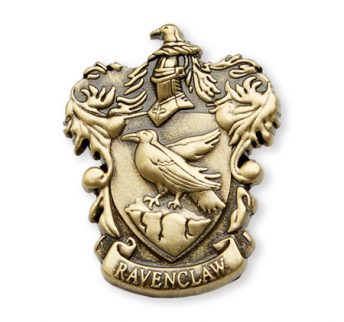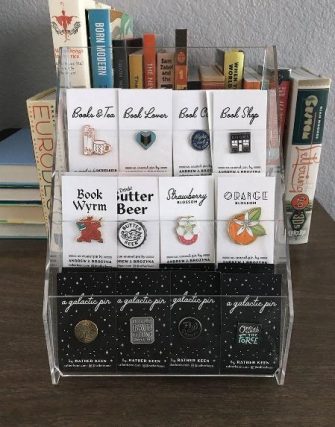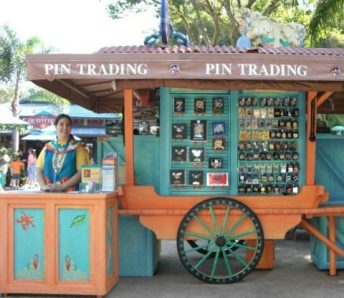Pin badges are all the rage with today’s consumers. Badges are unique, trendy and they appeal to people of all ages and demographics, whether someone is a first-time badge buyer or a dedicated collector. Badges can be timeless, or they can be connected to special promotions or events, like the upcoming 2020 Olympics in Japan. (You can already order a set of official Tokyo 2020 Olympic pin badges online!)
To tap into this trend, savvy retailers are stocking up and offering a range of customised badges within their retail locations. However, there’s more to selecting great merchandise than meets the eye. When adding badges to your store, you should also consider your audience, price, production, quality and placement. Here, we share our top tips for creating a smart badge merchandise strategy that delivers.
How to Select the Badges for Merchandising
Know your Audience
The first component of a smart badge merchandise strategy is all about your audience. Before you design your badges, get to know your audience and what they’re interested in. You likely already have this data available as part of your business plan and historical insights – think about how your customer preferences might translate into badge selection. What topics or themes will resonate with your shoppers? One word of advice here is to strive for balance. Chart a strategy that targets general interests and leverages well-known and popular designs, but also appeals to specialist audiences. It may sound a little tricky, but we can help you strike the right balance between the two.
For example, the Harry Potter Shop at Platform 9 ¾ perfectly targets its audience by offering a wide range of pin badges, many of which are exclusive to the shop. The range includes broader-themed Harry Potter designs (such as the Platform 9 ¾ Pin Badge and the Hogwarts Express Sign Pin Badge), perhaps for the neophyte fan, but the shop also offers more granular, house-specific pins for dedicated Harry Potter enthusiasts, like this Ravenclaw badge.

Price and Profitability
The second component of a smart badge merchandise strategy is all about price and profitability. Bottom line, to drive revenue, your products must be priced right. If pin badges are a new item for your store, do some preliminary market research before you set a purchase price. As with your audience, you’ll want to find the right balance here. Don’t select the highest price per se, but also don’t undervalue your product and establish a price point that’s too low. This is also something you can adjust over time as you sell more badges and get a sense of which products – and prices – are most popular.
If you’d like to set a higher price point, consider messaging strategies like exclusivity or limited-time offers. The Olympics badges we mentioned above, for example, have a high price point (US $129) but only 2,020 sets were produced (each features a unique serial number) and customers might be more willing to pay more to add these to their collection.
To get a sense of price point, start with your competitors. Peruse the shelves or online shops at stores in your area or that cater to a similar audience or niche. To help you keep track of things, we suggest creating a spreadsheet with research findings like badge style, customer niche and price. An informed pricing strategy will be useful down the road to identify and expand into untapped markets, and to help ensure your badge merchandise delivers results. It will also help with budget and inventory as you’ll know the right price and quantity to still turn a profit.
Ethical Production
Audience and pricing are critical components for your badge strategy, but don’t cut corners when it comes to ethical and environmentally-friendly products. Customers today care about where their products come from and what they’re made of. A Nielsen poll shows that consumers across all regions, income and categories are increasingly willing to pay extra for sustainable merchandise and seek products that support their own values. It’s important to ensure your merchandise is sourced and manufactured in an ethical manner, not only to drive sales but also because these choices are an extension of your brand.
The first step to ensure ethical manufacturing is to understand where your products are being made and by whom. This starts by asking the right questions of badge manufacturers and understanding what policies they have in place. Rocket Badge is a socially responsible company and ethical trading is one of our core values. Our factories have to pass strict auditing processes, we provide a range of merchandise made from eco-friendly materials and we closely follow the Modern Slavery Act to avoid any use of forced labour in our production process. For more information, see this post on 3 Questions to Ask Your Badge Manufacturer to help you find the perfect partner for your products.
Quality Merchandise
Next up is quality. As you likely know from your other products, the quality of your merchandise directly impacts your brand image, customer experience and profitability. This is especially true of pin badges, as they’re designed to be worn and seen. Here’s five more reasons why product quality matters, from a Business.com article, all of which are relevant to badge merchandise.
- Builds Trust With Your Customers
- Fuels Word of Mouth and Social Media Recommendations
- Produces Less Customer Complaints and Returns
- People Care About Aesthetics
- Produces a Higher ROI
The best way to ensure top-notch quality is to partner with a reputable and trusted manufacturer who can guarantee high quality merchandise. Do your due diligence here and ask for samples, testimonials and read unbiased reviews from past customers.
And remember, you don’t need to sacrifice your budget for quality. At Rocket Badge, for example, we offer a range of products that are extremely high quality yet cost effective to produce, especially in large quantities, such as stunning metal polished badges and premium quality enamel badges and fun items like branded keyrings and cufflinks.
Placement, Placement, Placement
Last but not least is placement. To sell your badges, they need to be seen! Consider placing your badges in special visual displays or at highly trafficked points of purchase. Creative, eye-catching pin badges are the perfect add-on item and are ideal to market to customers while they are waiting in line to pay.
Customers can touch and feel the quality of your products and the lower-price point encourages those last-minute, impulse purchases. Another strategy is to offer a display and badges that appeal to children waiting in line with their parents. Or try cross-promoting your badges in relevant areas of your store, like the way these book-inspired pin badges are located next to a stack of novels.

Pinterest/ratherkeen
We can help you design the perfect packaging like a printed backing card or custom-made presentation box. (In fact, did you know that adding a backing card can increase badge sales by up to 25 percent!?) If you have time and budget to get a bit more creative, consider placing your displays in unique or outdoor locations or your store windows. We love this pin trading kiosk at Disney’s Animal Kingdom.

Disney Fandom
We hope this post inspires you to add pin badges to your store shelves or online shop. If you’re ready to rev up your retail merchandise, but stuck on what to design, search for inspiration on sites like Etsy, which often curates lists of popular patches and pins.
We’re here to help you brainstorm ideas and transform your vision into stunning badges that are sure to fly off the shelf! Get in touch with us today!




